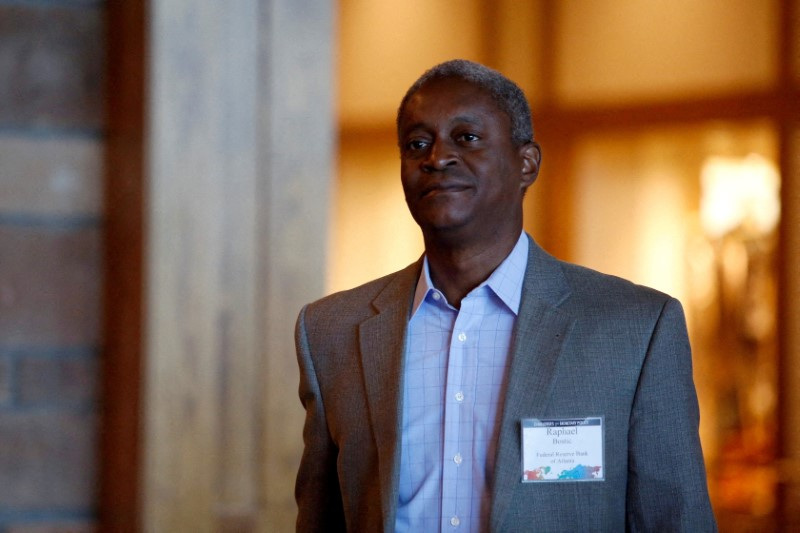By Howard Schneider
(Reuters) - Atlanta Federal Reserve President Raphael Bostic said on Monday he has an open mind about whether to cut interest rates again at the Fed's December meeting, with upcoming data on jobs important in shaping the decision.
"There is a lot of uncertainty," Bostic said in comments to reporters. "I am not going into this meeting with a sense that it is preordained...We have important data points that are coming in," including information to be released Friday on November job growth.
In an essay also released on Monday, Bostic said his base case remains that inflation will continue to fall to the Fed's 2% target, though it remains an open question how far and how fast interest rates should be reduced to ensure that happens while avoiding any undue damage to the job market.
"My base case on inflation remains that we are on track to reach the 2% objective," Bostic said, with housing costs, a main reason inflation has stalled above that level, likely in the process of slowing, and business contacts reporting that economic growth and price pressures are both easing.
While some measures of inflation have shown little progress in recent months, "weighing the totality of the data, I do not view the recent bumpiness as a sign that progress toward price stability has completely stalled," said Bostic, a voter on Fed policy this year.
He did not in his prepared remarks say whether he favored a rate cut at the coming Dec. 17-18 meeting, as expected by investors. The Fed cut rates at its November session to set the benchmark interest rate at a range of from 4.5% to 4.75%.
With risks roughly balanced between the Fed's aim of sustaining the maximum level of employment possible while keeping inflation at 2%, Bostic said it made sense for the Fed to be "shifting monetary policy toward a stance that neither stimulates nor restrains economic activity."
How much further the Fed needs to cut to reach that level, or how fast it should do so, however, remain open questions Bostic said, framed now by potential weakness in the job market as well as uncertainty around the path of the economy.
Bostic in a projection issued in September said he anticipated the Fed would only need to reduce its benchmark rate by three quarters of a percentage point this year, an amount equal to the cuts already made. He said he has not yet settled on a new projection for the appropriate cuts likely for 2025.
Bostic said that in general he feels the job market was "cooling in a largely orderly fashion in the face of higher interest rates...This is welcome news."

Though he said he viewed the economy heading into 2025 as on solid ground, he acknowledged that could change, particularly given risks around international events and developing U.S. policy. The incoming administration of Donald Trump has pledged to pursue policies, including import tariffs, tax cuts, and tight immigration, that some economists believe could cause prices to begin rising again.
"Geopolitical uncertainties linger at home and abroad, and could generate renewed inflationary pressures," Bostic said. "A continuation of the positive string of macroeconomic developments is not assured. Uncertainties persist on various fronts and risks loom both for the health of the labor market and price stability."